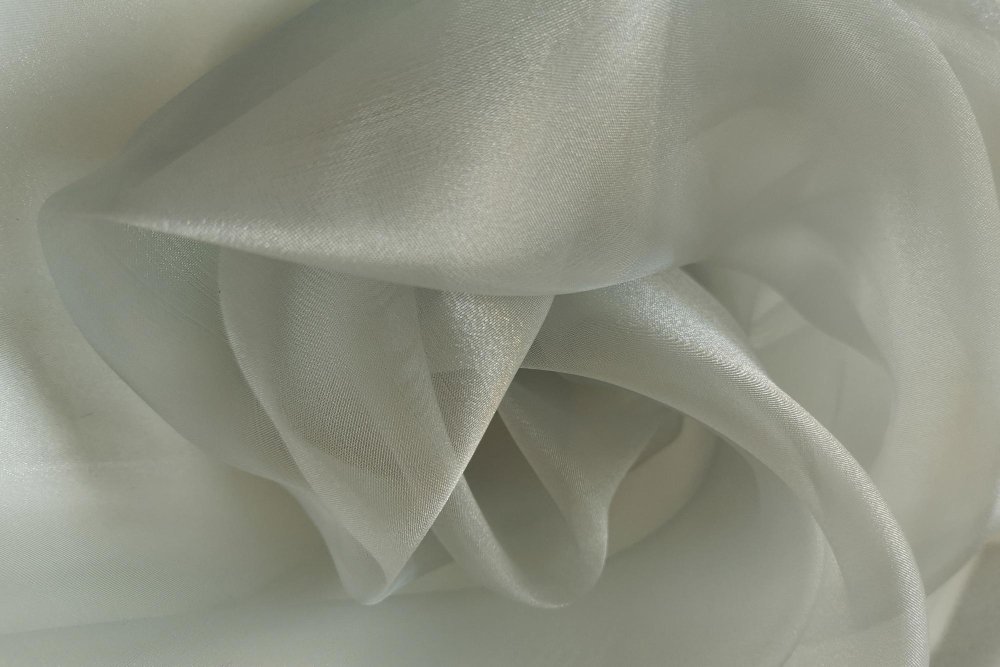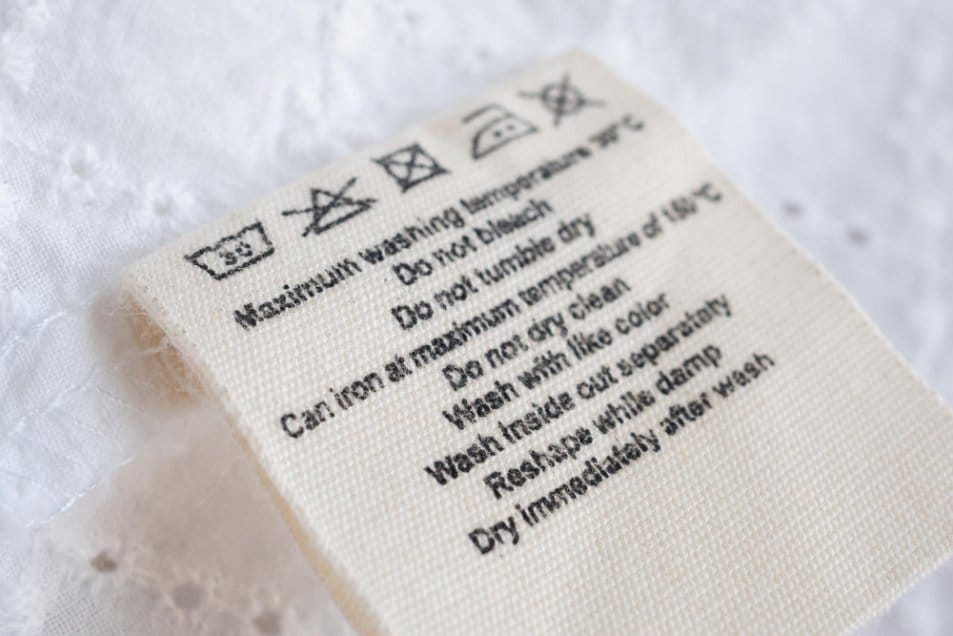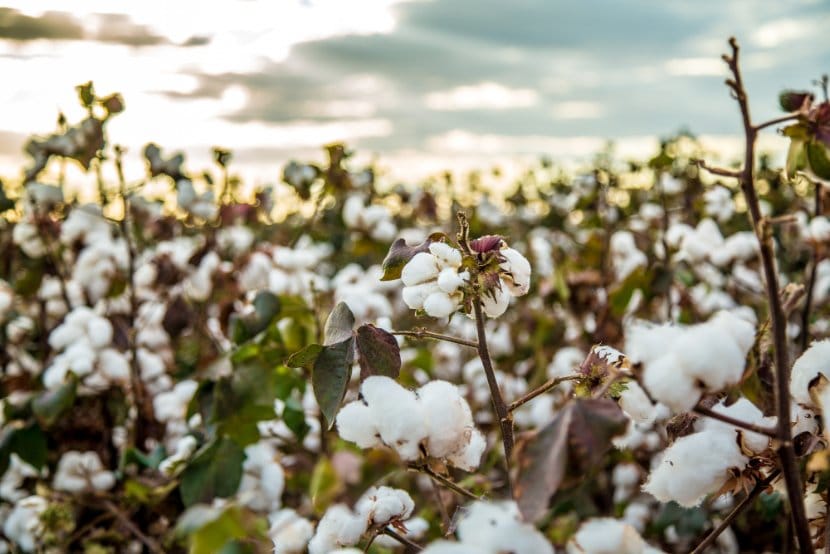Everything you need to know about working with, wearing, and caring for cotton voile
What is Cotton Voile Fabric?
Cotton voile is a lightweight, semi-sheer fabric that feels soft and smooth against your skin. The name comes from the French word for “veil,” which tells you everything about its delicate, airy nature. Think of it as the fabric equivalent of a gentle summer breeze.
This fabric gets made using a simple plain weave (an over-under pattern), but what makes it special is the use of highly twisted, fine cotton yarns. These tightly twisted threads give voile its characteristic crisp yet soft feel. The result? A fabric that drapes beautifully while still maintaining some structure.
A Brief History of Cotton Voile
Cotton voile originated in 19th-century Europe, particularly in France, where skilled weavers developed techniques to create this delicate fabric. The name “voile” (meaning veil in French) reflects its original purpose for lightweight veils and undergarments in warm climates.
Initially, voile was a luxury fabric reserved for the wealthy due to the skill required to produce such fine, twisted yarns. As textile manufacturing advanced during the Industrial Revolution, voile production became more efficient and accessible. By the early 1900s, it had become popular for summer dresses, blouses, and children’s clothing across Europe and America.
Today, countries like India, China, and Pakistan produce much of the world’s cotton voile, with premium versions still made in Europe using long-staple Egyptian or Pima cotton. The fabric continues to evolve, with manufacturers now offering organic, sustainable options alongside traditional varieties.
Is Voile Natural or Synthetic?
Traditional cotton voile is 100% natural, made entirely from cotton fibers. However, you’ll also find cotton blends that mix cotton with polyester, silk, or linen. Pure cotton voile offers the best breathability and natural feel, which is why most people prefer it for summer clothing.
What Does Cotton Voile Look Like?
Cotton voile has a smooth, slightly lustrous surface that catches light beautifully. You can see through it (it’s semi-transparent), especially in lighter colors. The fabric has a fine, even weave with no visible texture or bumps. When you hold it up, it has an ethereal, floating quality that makes it perfect for layered looks.
How to Identify Voile Fabric
Here’s a quick test: Lightly scratch the surface with your fingernail. If the threads stay tightly together, you’ve got quality voile. If they start separating easily, the weave is too loose and won’t hold up well. You can also check by looking at how it drapes. True voile will flow smoothly but still hold a bit of crisp structure.
Cotton Voile vs Other Lightweight Fabrics
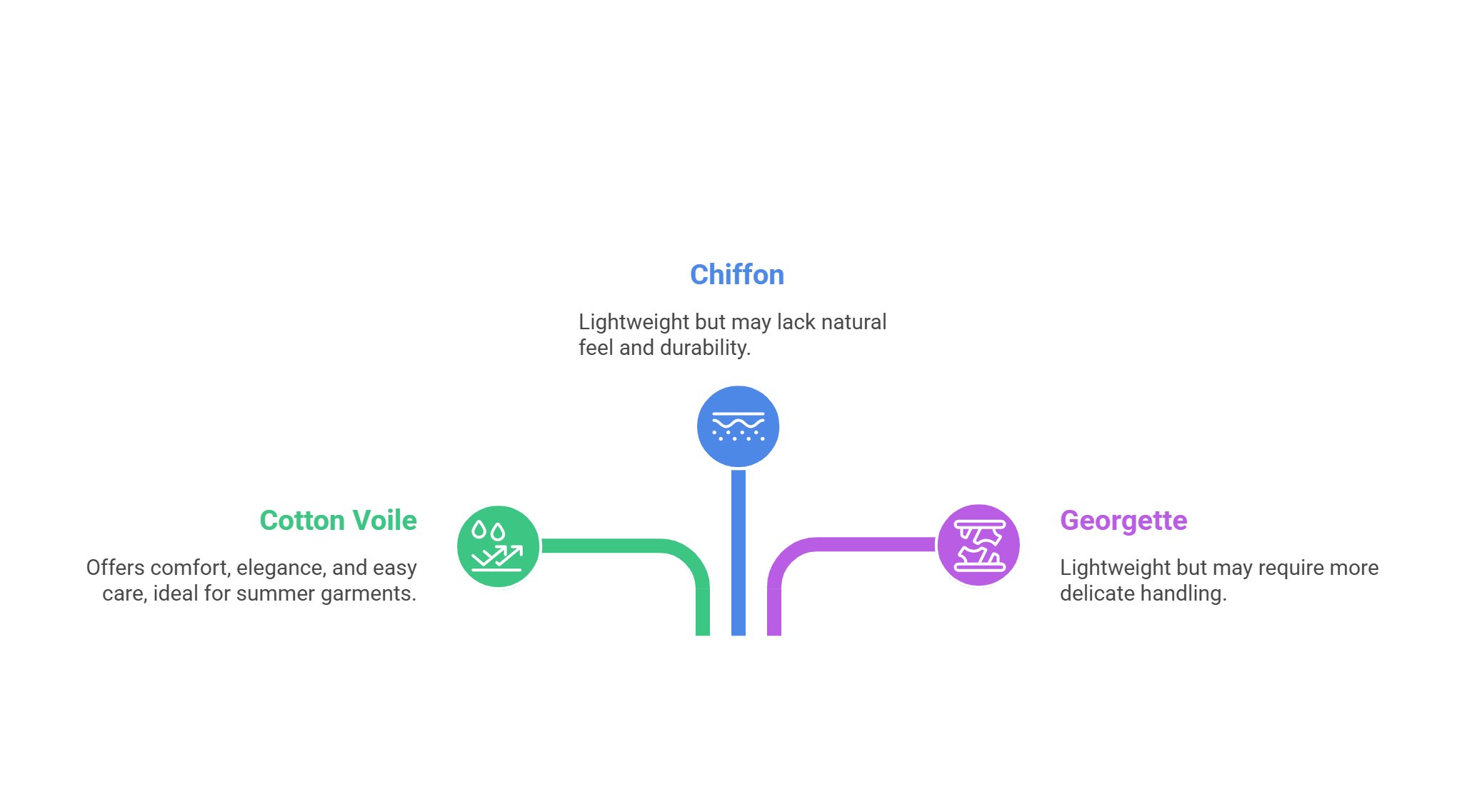
If you’re standing in a fabric store wondering which lightweight cotton to choose, this comparison will help. While voile, lawn, batiste, and chiffon might look similar at first glance, they each have unique characteristics.
| Feature | Cotton Voile | Cotton Lawn | Batiste | Chiffon |
|---|---|---|---|---|
| Weight (GSM) | 60-100 | 100-150 | 50-80 | 50-70 |
| Sheerness | Semi-transparent | Less sheer/mostly opaque | Very sheer | Highly transparent |
| Texture | Smooth, crisp | Crisp, structured | Silky, very soft | Slightly textured |
| Drape | Fluid with structure | More structured | Very fluid | Extremely fluid |
| Best For | Summer dresses, curtains | Button-downs, structured garments | Christening gowns, lingerie | Evening wear, formal |
| Sewing Difficulty | Beginner-friendly | Easy | Intermediate | Advanced |
| Price Range | $$ | $$ | $$$ | $ – $$$$ |
What is the Difference Between Cotton and Cotton Voile?
“Cotton” is the raw fiber material that comes from cotton plants. “Cotton voile” is a specific type of fabric woven from cotton fibers using a particular technique. It’s like the difference between “wood” and “furniture.” The cotton is the material, while voile is what gets made from it.
What is the Difference Between Voile and Muslin?
Muslin has a looser weave and often retains a slight fuzz from the unsinged yarn, giving it a softer, more matte appearance. Voile is more tightly woven with a smoother, slightly lustrous finish. Muslin is typically more opaque than voile and has less drape.
Is Voile the Same as Chiffon?
No, they’re different. Chiffon has a slightly textured, crinkled surface due to its twisted crepe yarns, while voile is smooth. Chiffon is slipperier and more challenging to sew than voile. Voile also tends to be made from cotton, while chiffon is often silk or polyester.
What is the Difference Between Voile and Cotton Poplin?
Cotton poplin is denser and heavier than voile, with a characteristic ribbed texture. Poplin is completely opaque and has more body, making it better for structured garments like button-down shirts. Voile is much lighter and more breathable.
What is the Difference Between Cotton Voile and Linen?
Linen comes from flax plants rather than cotton, giving it a naturally textured, slightly rough surface. Linen is typically heavier and more structured than voile. While both are breathable, linen wrinkles more noticeably and has a more casual, relaxed look.
Is Organza the Same as Voile?
Organza is stiffer and has more body than voile. While both are sheer, organza holds its shape better and has a crisp, almost papery feel. Organza is better for structured overlays and decorative elements, while voile is softer and more suitable for wearable garments.
What is the Difference Between Tulle and Voile?
Tulle is a net-like fabric with visible holes in the weave, while voile has a tight plain weave. Tulle is much stiffer and is typically used for tutus, veils, and decorative elements. Voile is softer, more comfortable to wear, and better for everyday clothing.
Features and Benefits of Cotton Voile
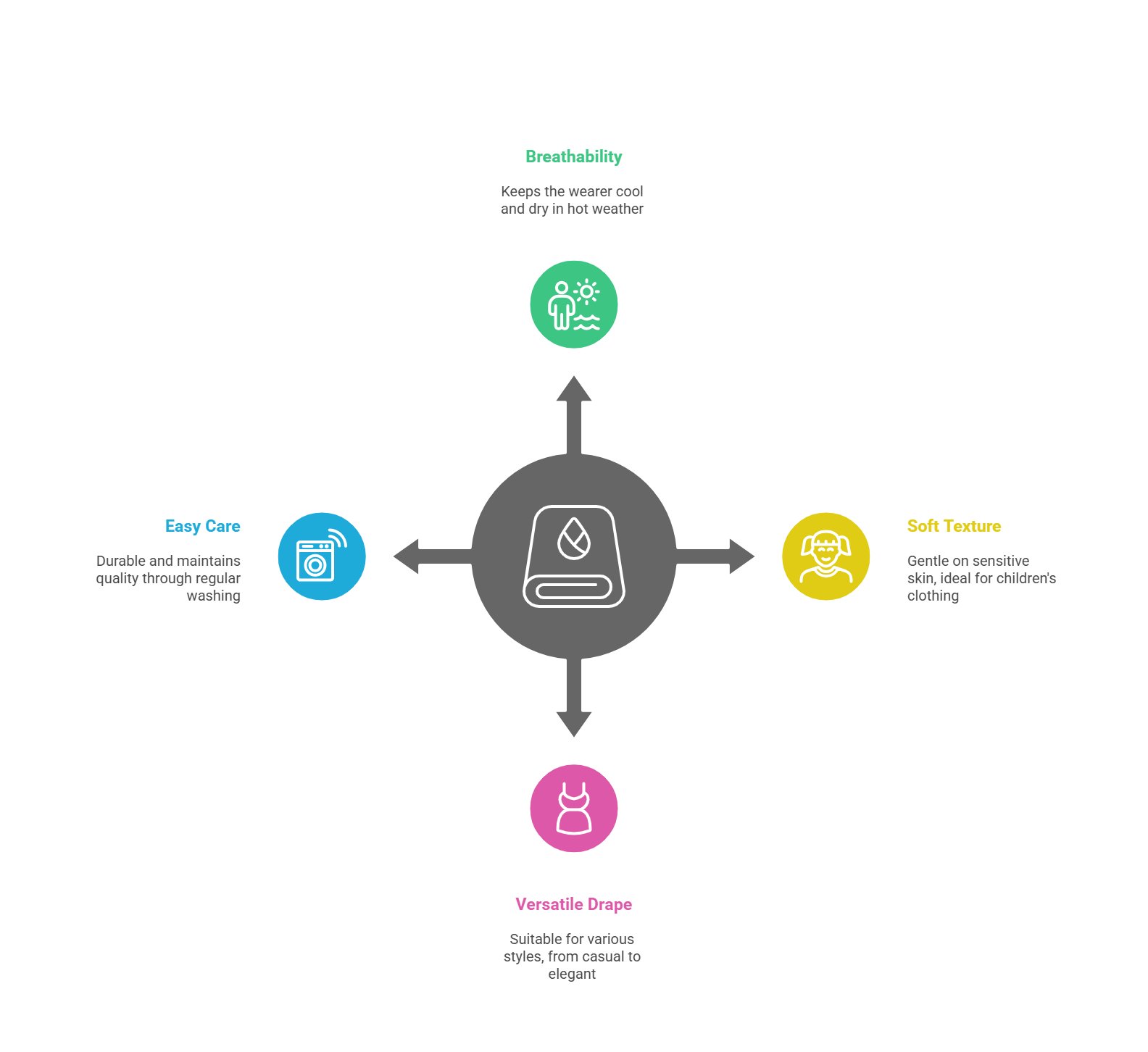
Breathability and Temperature Control
Cotton voile excels in hot weather. The open weave pattern allows air to circulate freely, helping moisture evaporate quickly. This makes it one of the best fabrics for summer clothing. Unlike synthetic materials that can feel clammy, cotton voile stays fresh even when temperatures soar.
Is Cotton Voile Good for Summer?
Absolutely! Cotton voile ranks among the top fabrics for summer wear. Its lightweight construction and natural breathability keep you cool without sacrificing style. You can wear it in humid conditions without feeling overheated or sticky.
Use our Summer Wardrobe Calculator to plan your perfect hot-weather clothing collection, including cotton voile pieces.
Is Cotton Voile Warm?
No, cotton voile is designed for warm weather. It’s too lightweight and breathable to provide warmth in cold temperatures. If you need cooler weather fabrics, consider cotton flannel or winter-weight materials.
Soft Texture and Comfort
The fine cotton fibers create a smooth surface that feels gentle against sensitive skin. This makes cotton voile perfect for children’s clothing and for anyone prone to skin irritation. The fabric doesn’t scratch or cause discomfort during extended wear.
Is Cotton Voile Itchy?
Not at all! High-quality cotton voile is one of the softest fabrics you can wear. The smooth, fine fibers don’t irritate skin. If you find a voile that feels scratchy, it likely contains synthetic blends or is poorly made.
Versatile Drape and Movement
Cotton voile strikes a perfect balance between structure and flow. It drapes gracefully for romantic, flowing silhouettes but maintains enough body to hold shapes in gathering and pleating. This versatility makes it suitable for everything from casual sundresses to elegant blouses.
Easy Care and Durability
Despite its delicate appearance, good-quality cotton voile withstands regular washing and maintains its smooth finish. The fabric resists pilling and, when properly cared for, lasts through many seasons. This durability makes it economical for everyday wear.
Technical Specifications
Understanding the technical details helps you choose the right voile for your project and know what to expect from the fabric.
Standard Cotton Voile Specifications
- Weight: 60-100 GSM (grams per square meter), with 70-77 GSM most common
- Thread Count: 80×80 to 100×92 (warp x weft)
- Yarn Count: 80s to 120s (higher numbers mean finer yarn)
- Typical Width: 42-63 inches
- Shrinkage Rate: 3-5% on first wash
- Thickness: Approximately 0.20 millimeters
- Weave: Plain weave (1-over-1 pattern)
Not sure what GSM weight you need for your project? Use our Fabric Weight Calculator to find the perfect match.
What is Premium Cotton Voile?
Premium cotton voile uses long-staple cotton varieties like Egyptian cotton or Pima cotton. These produce finer, stronger yarns that create an even softer fabric with better durability. Premium voile typically has a higher thread count (90×90 or above) and undergoes mercerization for added luster and strength.
How Many Types of Voile Are There?
Cotton voile comes in several variations:
- Plain Cotton Voile: Basic white or solid colors, most versatile
- Printed Cotton Voile: Features patterns from florals to geometrics
- Embroidered Cotton Voile: Adds decorative stitching for formal looks
- Silk-Cotton Voile: Blends silk for extra softness and sheen
- Linen-Cotton Voile: Combines cotton softness with linen texture
When NOT to Use Cotton Voile
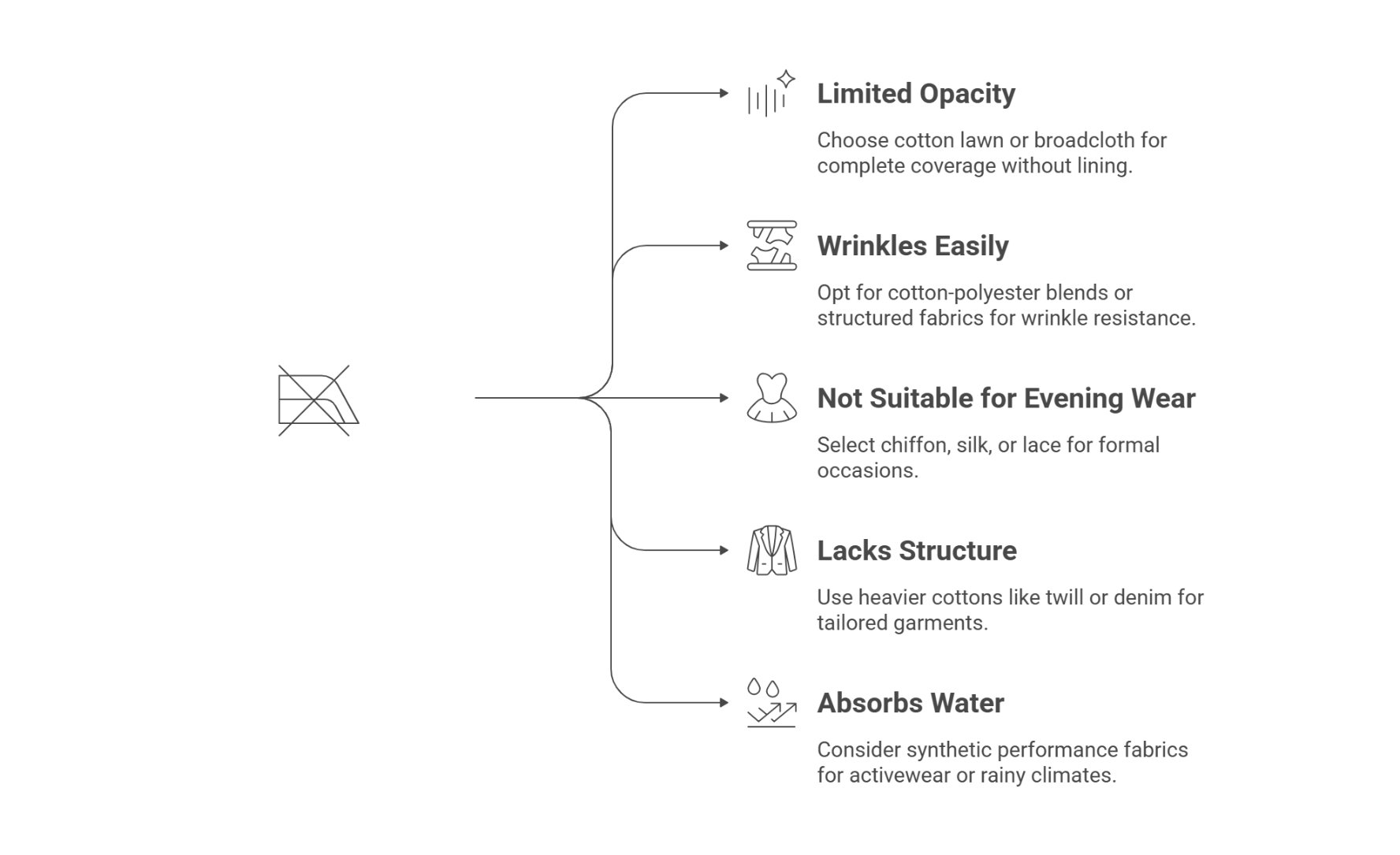
While cotton voile has many advantages, it’s not the right choice for every project. Being honest about its limitations helps you make better fabric decisions.
What are the Disadvantages of Voile Fabric?
1. Limited Opacity
The Issue: Cotton voile is semi-transparent, especially in light colors. You can see through it, which may not work for all garments.
When to Skip It: If you need complete coverage without lining, choose cotton lawn or broadcloth instead.
2. Wrinkles Easily
The Issue: Cotton voile creases noticeably during wear and storage.
When to Skip It: If you need wrinkle-resistant travel clothing or office wear, consider cotton-polyester blends or structured fabrics.
3. Not Suitable for Evening Wear
The Issue: Cotton voile has a casual appearance that doesn’t look dressy enough for formal occasions.
When to Skip It: For special events, choose chiffon, silk, or lace instead.
4. Lacks Structure for Tailored Garments
The Issue: The soft, flowing drape doesn’t provide enough body for structured designs.
When to Skip It: For blazers, tailored pants, or structured dresses, use heavier cottons like cotton twill or denim.
5. Absorbs Water Readily
The Issue: Like all cotton, voile absorbs moisture and takes time to dry. It feels uncomfortable when wet.
When to Skip It: For activewear or rainy climates, choose synthetic performance fabrics with moisture-wicking properties.
Can You See Through Cotton Voile?
Yes, you can see through cotton voile, particularly in lighter colors. The sheerness varies depending on the fabric’s weight and color. Darker colors and higher GSM weights offer more coverage, but voile is always at least semi-transparent. If this concerns you, plan to use lining or layer the garment over something else.
Is Voile Old Fashioned?
Not at all! While voile has been around since the 19th century, it remains popular in contemporary fashion. Modern designers use it for trendy summer collections, breezy blouses, and layered looks. The key is how you style it rather than the fabric itself.
Are Voiles in Fashion?
Yes, cotton voile continues to appear in fashion collections, especially for spring and summer lines. The current trend toward natural, breathable fabrics and sustainable fashion has actually increased voile’s popularity.
Best Uses for Cotton Voile
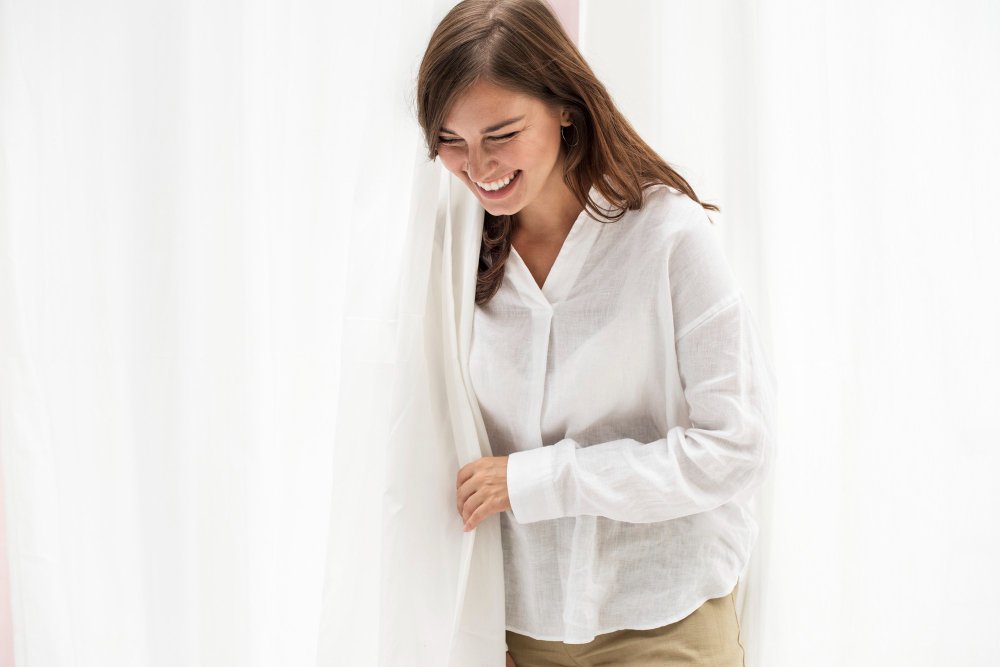
Clothing Applications
Cotton voile shines in warm-weather garments where breathability and soft drape matter most:
- Summer Dresses: Flowing sundresses, maxi dresses, and casual frocks
- Blouses and Tops: Romantic blouses with gathered sleeves or layered designs
- Skirts: Full, gathered skirts that move beautifully
- Children’s Clothing: Comfortable, breathable outfits for kids
- Sleepwear: Lightweight nightgowns and pajama sets
- Scarves: Soft, drapey scarves for warm weather
- Beach Cover-ups: Light layers over swimwear
- Lingerie: Soft, comfortable undergarments (when lined appropriately)
Home Décor Applications
Beyond clothing, cotton voile works beautifully for home projects:
- Sheer Curtains: Filters light while maintaining privacy
- Canopy Draping: Creates romantic bedroom or outdoor settings
- Table Runners: Adds elegance to table settings
- Pillow Covers: Lightweight decorative accents
- Quilt Backing: Soft, breathable backing for lightweight quilts
What is the Point of Voile Curtains?
Voile curtains soften harsh sunlight without completely blocking it, creating a bright, airy atmosphere while still offering some privacy during the day. They’re perfect for rooms where you want natural light but need to reduce glare or create a soft, diffused glow.
Does Voile Keep the Sun Out?
Voile filters sunlight rather than blocking it completely. It reduces glare and UV intensity but won’t darken a room like blackout curtains. If you need complete sun blocking, you’ll want heavier drapes or blackout linings.
Are Voile Curtains Old Fashioned?
Voile curtains remain a popular choice in modern interior design. The key is styling them contemporary ways, like using them with minimalist hardware or pairing them with modern furniture. Avoid overly fussy valances or heavy draping for a current look.
Project Ideas by Skill Level
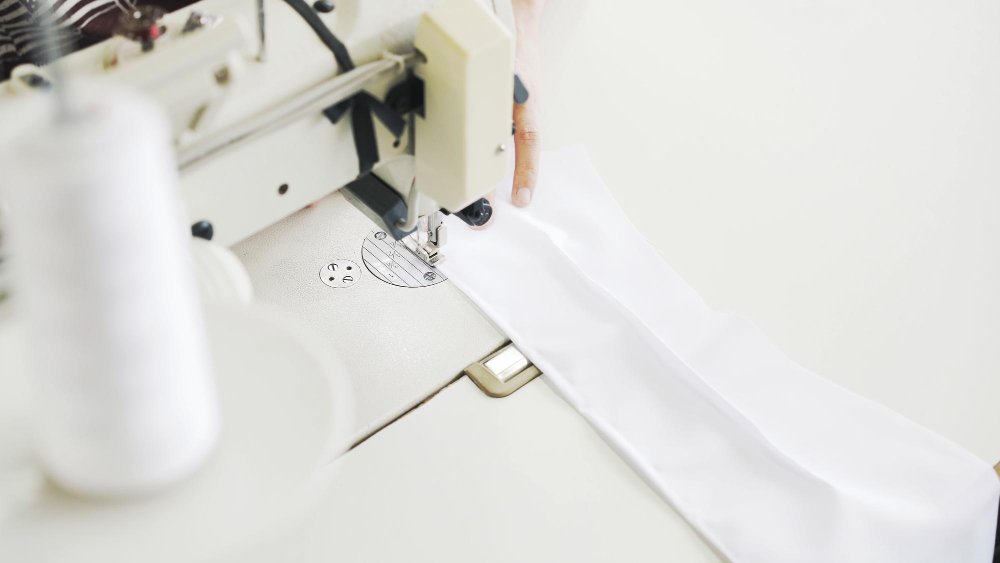
Ready to start working with cotton voile? Here are projects matched to different skill levels, with approximate yardage requirements.
Beginner Projects
Simple Summer Scarf
Yardage: 1 yard
Skills Needed: Straight stitching, basic hem
Why It Works: Small project to practice handling delicate fabric without complex construction
Pillowcase
Yardage: 1.5 yards
Skills Needed: Straight seams, basic hem
Why It Works: Simple rectangles give you sewing practice without fitting concerns
Basic Curtain Panel
Yardage: Measure your window height + 12 inches for hems
Skills Needed: Straight stitching, rod pocket or tab construction
Why It Works: Straight lines and simple hems build confidence. Check out our easy sewing projects guide for more ideas.
Intermediate Projects
Lined Sundress
Yardage: 2-3 yards (depending on length and size)
Skills Needed: Working with patterns, installing zippers, lining techniques
Why It Works: Introduces pattern following and finishing techniques. See our dress sewing tutorial for detailed guidance.
Kimono Robe
Yardage: 3-4 yards
Skills Needed: Pattern layout, binding edges, working with bias tape
Why It Works: Simple construction with opportunities to practice edge finishing
Baby Clothing Set
Yardage: 1.5-2 yards
Skills Needed: Small seam allowances, delicate handling, elastic insertion
Why It Works: Small garments are less intimidating while teaching precision
Advanced Projects
French-Seamed Blouse
Yardage: 2-2.5 yards
Skills Needed: French seams, buttonholes, collar construction, set-in sleeves
Why It Works: Combines multiple advanced techniques for a professional finish
Layered Wedding Dress Overlay
Yardage: 5-8 yards (depending on fullness and length)
Skills Needed: Working with sheer fabrics, multiple layers, precise gathering, invisible finishes
Why It Works: Creates ethereal, romantic effects perfect for special occasions
Sewing Tips and Techniques for Cotton Voile
Is Cotton Voile Difficult to Sew?
Cotton voile is actually beginner-friendly compared to other sheer fabrics like chiffon or organza. It’s slightly slippery but doesn’t shift as dramatically on your cutting table. With a few smart techniques, even newer sewists can achieve professional results.
Video tutorial: Learn essential techniques for sewing with lightweight and sheer fabrics like cotton voile
How to Sew Voile Fabric for Beginners
Pre-Washing is Essential
Always pre-wash cotton voile in cool water with mild detergent before cutting. This removes sizing chemicals and allows the fabric to shrink (typically 3-5%). Air-dry flat or use low heat, removing it slightly damp to prevent wrinkles. This step ensures your finished garment maintains its size after the first wash.
Choosing the Right Tools
- Needles: Use sharp microtex or universal needles in size 60/8 or 70/10. These fine needles create tiny holes that don’t show in the delicate weave
- Thread: Choose 60-weight polyester thread or fine cotton thread for nearly invisible seams that don’t add bulk
- Pins: Use fine silk pins or clips to avoid leaving permanent holes
- Cutting Tools: Sharp fabric scissors or a rotary cutter work best
Cutting and Layout
Pin your pattern pieces carefully to prevent shifting. Because voile is semi-transparent, pay extra attention to grainlines so patterns align across seams. Use pattern weights along with a few strategic pins for better control during cutting.
For detailed cutting advice based on your fabric type, try our Fabric Type Selector Tool for custom recommendations.
How to Cut Voile Straight
Pull a thread from the crossgrain to create a visible line, then cut along it. This ensures you’re cutting on grain. Alternatively, use a clear gridded ruler with your rotary cutter on a cutting mat for perfectly straight cuts. For more cutting techniques, check our fabric cutting guide.
Best Seam Finishes
Because voile is semi-sheer, your seam finishes show through. Choose finishing methods that look clean from both sides:
- French Seams: The gold standard for sheer fabrics. They enclose raw edges completely for a professional look
- Flat-Felled Seams: Strong and flat, perfect for garments that need durability
- Narrow Hems: Roll and stitch twice for delicate edge finishes
- Hand-Overcast: Traditional method that creates minimal bulk
Expert sewing instructor Sandra Betzina recommends in All New Fabric Savvy that sewers working with voile should always preshrink the fabric and use fine needles to avoid visible holes in the delicate weave (Threads Magazine, 2023).
Pressing Techniques
Use a low-heat iron (cotton setting) with a pressing cloth to avoid shine marks on the fabric surface. Press seams immediately after sewing while they’re still warm for the best results. Avoid sliding the iron, which can stretch the fabric. Instead, lift and press in sections.
Does Cotton Voile Need Ironing?
Yes, cotton voile wrinkles easily and usually needs ironing to look its best. Use a steam iron on a low to medium setting. For stubborn wrinkles, lightly dampen the fabric first. A pressing cloth protects the surface from developing a shiny appearance.
What is the Most Difficult Fabric to Sew?
While cotton voile has its challenges, fabrics like silk chiffon, stretch velvet, and faux leather are generally considered more difficult. Voile’s stable weave makes it much easier to handle than many other sheer fabrics, making it a good starting point if you want to learn working with delicates.
Common Problems and Solutions
Even experienced sewists encounter challenges when working with cotton voile. Here’s how to solve the most common issues:
Problem: Fabric Shifts During Cutting
Solution: Use pattern weights along with strategic pins. Place tissue paper under the fabric on your cutting mat for added stability. Cut through both layers at once using a sharp rotary cutter with firm, confident strokes.
Problem: Puckering at Seams
Solution: Lower your thread tension slightly and reduce presser foot pressure. Use a smaller stitch length (2.0-2.5mm) for better control. Place tissue paper under the seam as you sew, then tear it away afterward. Learn more about fixing seam issues in our seam troubleshooting guide.
Problem: Too Sheer/Revealing
Solution: Line your garment with silk organza (maintains breathability) or cotton batiste (adds opacity). Alternatively, use a double layer of voile for built-in coverage. Choose darker colors for more opacity.
Problem: Needle Holes Show
Solution: Switch to a finer needle (size 60/8). Test on scraps first. If holes persist, the fabric quality may be too loose. Check the fingernail scratch test before buying more.
Problem: Thread Shows Through
Solution: Use finer thread (60-weight) in a color that matches your fabric exactly. For white or light fabrics, use white thread. For darker fabrics, match the shade as closely as possible.
Problem: Wrinkles Set in Finished Garment
Solution: Store voile garments hung rather than folded. Use a steamer for quick wrinkle removal. For stubborn creases, press with a damp pressing cloth on low heat.
How to Care for Cotton Voile
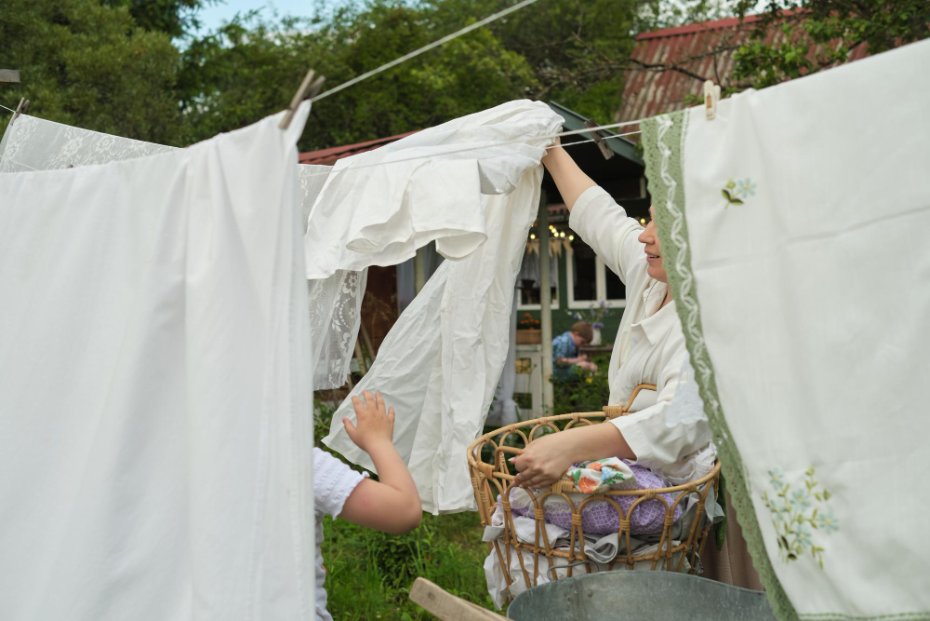
How to Wash Voile Fabric
Proper care extends the life of your cotton voile garments and keeps them looking fresh. Follow these guidelines for best results:
Machine Washing
- Temperature: Use cool or lukewarm water (30°C/86°F maximum)
- Cycle: Gentle or delicate cycle only
- Detergent: Mild liquid detergent without harsh chemicals
- Protection: Place items in a mesh laundry bag to prevent snagging
- Load Size: Wash with similar lightweight items only
Hand Washing
For delicate or special garments, hand washing provides the gentlest care. Fill a basin with cool water and mild detergent. Gently agitate for a few minutes, then rinse thoroughly in clean water. Never wring or twist voile, as this causes wrinkles and can damage the fibers.
Does Cotton Voile Shrink?
Yes, cotton voile typically shrinks 3-5% during the first wash. This is why pre-washing before cutting is so important. After the initial shrinkage, properly cared for voile remains stable in size. Always avoid hot water and high dryer heat to prevent additional shrinkage.
Drying
- Best Method: Air-dry flat on a clean towel or drying rack
- Alternative: Hang to dry away from direct sunlight (which can fade colors)
- Machine Drying: If necessary, use the lowest heat setting and remove while slightly damp
- Avoid: High heat settings that can damage fibers and cause excessive shrinkage
Storage
Hang cotton voile garments on padded hangers to prevent wrinkles and maintain shape. If you must fold items, place acid-free tissue paper between folds to minimize creasing. Store in a cool, dry place away from direct sunlight.
Stain Removal
Treat stains immediately for best results. Blot (don’t rub) liquid spills with a clean white cloth. For set-in stains, apply a small amount of mild detergent directly to the spot and gently work it in with your fingers. Rinse thoroughly. Avoid bleach, which weakens cotton fibers. For more stain solutions, visit our cotton care guide.
Need personalized care instructions? Try our Fabric Care Calculator for custom recommendations based on your specific garment.
Does Voile Wrinkle Easily?
Yes, cotton voile wrinkles quite easily due to its lightweight construction and natural fiber content. However, the wrinkles usually release with light steaming or a quick press with a cool iron. Some people embrace the slightly rumpled look as part of voile’s casual charm.
Where to Buy and What to Look For
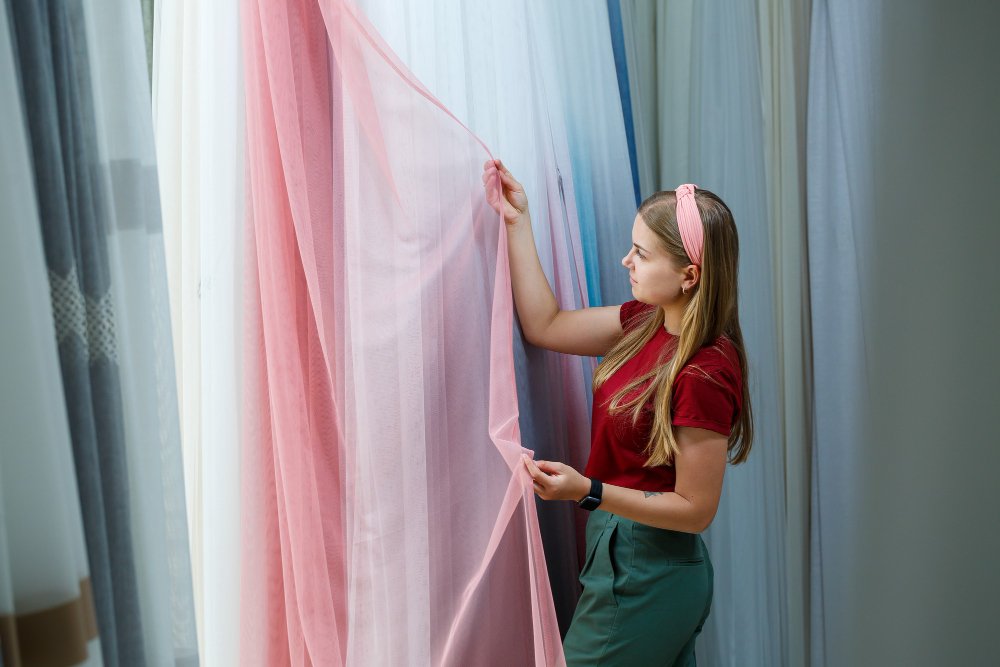
Quality Indicators
Not all cotton voile is created equal. Here’s how to identify high-quality fabric:
- The Scratch Test: Lightly scratch the surface with your fingernail. Threads should stay firmly in place, not separate easily
- Thread Count: Look for 80×80 or higher for durability
- Weight: Check the GSM. 70-77 GSM offers a good balance of sheerness and strength
- Finish: Quality voile has an even, smooth surface with consistent weave
- Cotton Type: Premium versions use long-staple cotton like Egyptian or Pima
- Mercerization: This treatment adds luster and strength. Ask if it’s mercerized
What is 100% Cotton Voile?
This means the fabric contains only cotton fibers with no synthetic or other natural fiber blends. Pure cotton voile offers maximum breathability, natural comfort, and hypoallergenic properties. It’s the best choice for sensitive skin and hot weather wear.
Is Full Voile Cotton?
“Full voile” typically refers to the fabric’s width rather than its composition. It can be 100% cotton or a blend. Always check the fiber content on the label to know exactly what you’re getting.
Where to Buy
You can find cotton voile at:
- Online Fabric Retailers: Mood Fabrics, Fabric.com, and specialty shops offer wide selections with detailed descriptions
- Local Fabric Stores: Allows you to feel the fabric before buying
- Quilting Shops: Often carry voile in beautiful prints
- International Suppliers: Liberty of London and other European suppliers offer premium options
Price Expectations
Cotton voile typically ranges from $8-25 per yard, depending on quality, brand, and whether it’s solid, printed, or embroidered. Premium versions with long-staple cotton or special finishes cost more but offer superior softness and durability.
How Much to Buy
Always purchase slightly more than your pattern requires to account for pre-wash shrinkage, mistakes, and pattern matching if using prints. Add 10-15% extra to your total yardage calculation. Use our Fabric Yardage Calculator for precise measurements.
Real User Experiences
“I used voile for my daughter’s summer dress collection and was amazed by how well it held up through dozens of washes. The key was pre-washing!” – Sarah M., home sewer
“As someone with sensitive skin, cotton voile has been a game changer. It’s the only fabric I can wear in hot weather without irritation.” – James T., fashion designer
“I made curtains for my nursery with cotton voile and love how they filter the light. The room stays bright but not harsh.” – Priya K., first-time parent
Sustainability Considerations
Environmental Impact
Cotton voile’s sustainability depends on how the cotton gets grown and processed. Conventional cotton farming uses significant water and pesticides, impacting the environment. However, the fabric’s durability and natural biodegradability offer advantages over synthetic alternatives.
Sustainable Options
Look for these certifications when buying eco-friendly voile:
- GOTS (Global Organic Textile Standard): Ensures organic farming practices and ethical production
- OEKO-TEX: Certifies fabrics free from harmful chemicals
- Fair Trade: Guarantees fair wages and safe working conditions
- BCI (Better Cotton Initiative): Promotes sustainable farming practices
For more information on sustainable cotton options, read our guide to sustainable style with organic cotton. The Textile Exchange’s annual reports provide comprehensive data on cotton’s environmental impact and sustainable alternatives.
Extending Fabric Life
Make your cotton voile more sustainable by:
- Following proper care instructions to prevent premature wear
- Repairing small tears or loose seams promptly
- Repurposing scraps for smaller projects or quilting
- Choosing quality over quantity so garments last longer
- Washing only when necessary to conserve water and reduce wear
Frequently Asked Questions
Is Cotton Voile Good?
Yes, cotton voile is excellent for summer clothing, children’s wear, and lightweight home décor. It combines breathability, soft comfort, and elegant drape. The fabric works well for casual garments where you want airflow without sacrificing style. However, it’s not ideal for structured garments, formal wear, or situations requiring complete opacity.
What is Very Thin Cotton Fabric Called?
Several ultra-lightweight cottons exist besides voile, including batiste (very soft and fine), lawn (crisp and smooth), muslin (loose weave with slight fuzz), and gauze (loose, open weave). Each has unique characteristics that make it suitable for different projects.
Can We Wear Voile Fabric in Summer?
Absolutely! Cotton voile ranks among the best fabrics for hot weather. Its lightweight construction and breathable weave allow air circulation, helping you stay cool even in high temperatures. The natural cotton fibers wick moisture away from skin, preventing that clammy feeling you get with synthetics.
What is the Softest Type of Cotton?
Long-staple cottons like Pima and Egyptian cotton produce the softest fabrics. These premium cottons have longer fibers that create smoother, more durable yarns. Supima cotton (American Pima) also ranks very high for softness. The fabric weave matters too. Voile, batiste, and sateen weaves feel softer than plain broadcloth.
What is the Best Cotton for Sensitive Skin?
100% organic cotton in lightweight weaves like voile, batiste, or jersey knit works best for sensitive skin. These fabrics avoid harsh chemicals used in conventional cotton processing. Look for GOTS-certified organic cotton and avoid fabric softeners that can irritate skin.
What is the Best Cotton for Hot Weather?
Cotton voile, lawn, and gauze top the list for hot weather comfort. These lightweight weaves maximize breathability while providing coverage. Voile offers slightly more structure than gauze while staying cooler than lawn. For very hot, humid conditions, voile or double gauze work exceptionally well.
Can You See Through Voile in the Day?
Yes, voile is semi-transparent, so you can see through it during daylight hours. The visibility depends on the color (darker is less see-through), lighting conditions, and what’s behind the fabric. For curtains, voile provides privacy during the day by obscuring details while still filtering light. At night with indoor lights on, voile curtains become more transparent.
What is the Best Sheer Fabric?
It depends on your project. Cotton voile wins for casual, comfortable clothing and home décor. Silk chiffon works best for elegant evening wear. Organza provides structure for formal overlays. Tulle is perfect for decorative elements. Each sheer fabric has unique properties that make it ideal for specific applications.
What Fabric Can You Not See Through?
For completely opaque fabrics, choose cotton broadcloth, poplin, denim, twill, or canvas. These tighter weaves and heavier weights prevent light from passing through, giving complete coverage without lining.
What is the Flowy Fabric Called?
Several fabrics create flowy effects. Cotton voile, chiffon, charmeuse, and rayon challis all drape beautifully and create movement. Voile offers the best combination of flow and breathability for everyday wear. Chiffon provides the most dramatic floating effect but requires more care.
Which is Stronger, Tulle or Organza?
Organza is generally stronger than tulle. Organza has a tighter plain weave that resists tearing better than tulle’s net-like structure. However, both are delicate fabrics that need careful handling. For strength combined with sheerness, voile actually outperforms both.
Is Voile Better Than Net?
For clothing, yes. Voile is softer, more comfortable against skin, and more versatile than netting. Net fabrics are stiffer and primarily used for decorative purposes, petticoats, or structural underlayers. Voile works for actual garments you want to wear, while net serves specific functional or decorative roles.
What Linen is Twice as Soft as Cotton?
Belgian linen, particularly fine handkerchief linen, becomes incredibly soft after washing and can feel softer than cotton. However, this varies by quality and weave. High-quality linen gets softer with each wash, eventually achieving a buttery texture that rivals the softest cottons.
Conclusion
Cotton voile offers a winning combination of breathability, soft comfort, and elegant drape that makes it perfect for warm-weather clothing and light home décor projects. This semi-sheer fabric has earned its place in both traditional and contemporary fashion through its ability to keep you cool without sacrificing style.
Key Takeaways
- Perfect for Hot Weather: The lightweight weave (60-100 GSM) and natural cotton fibers provide exceptional breathability, making voile one of the best fabrics for summer
- Beginner-Friendly: Despite being delicate, cotton voile is easier to sew than other sheer fabrics like chiffon. Use fine needles, French seams, and pre-wash before cutting
- Always Pre-Wash: Expect 3-5% shrinkage on first wash. Pre-washing ensures your finished garment maintains its size
- Plan for Sheerness: Cotton voile is semi-transparent. Use lining, double layers, or darker colors if opacity matters
- Choose Quality: Test with the fingernail scratch method. Threads should stay firmly in place. Look for 70-77 GSM and 80×80+ thread count
- Care Gently: Wash in cool water on delicate cycle, air-dry when possible, and iron on low heat with a pressing cloth
- Know When to Skip It: Voile isn’t suitable for formal wear, structured garments, or situations requiring complete coverage without lining
- Consider Sustainability: Look for GOTS-certified organic cotton voile to reduce environmental impact
Final Recommendations
If you’re new to cotton voile, start with a simple project like a scarf or pillowcase to get comfortable handling the fabric. Once you’ve mastered the basics, move on to lined dresses or blouses where you can practice more advanced techniques like French seams and delicate finishing.
Choose your cotton voile based on your specific needs. For the softest feel and best quality, invest in premium voile made from long-staple cotton like Pima or Egyptian varieties. For everyday projects, standard cotton voile in the 70-77 GSM range offers excellent value and performance.
Remember that working with voile requires patience and the right tools, but the results are worth the effort. The fabric’s natural breathability, soft drape, and timeless appeal make it a valuable addition to any sewing collection. Whether you’re creating flowing summer dresses, comfortable children’s clothing, or elegant home décor, cotton voile delivers beautiful results that stand the test of time.
For more sewing guidance, explore our beginner’s guide to sewing and our collection of beginner-friendly sewing patterns. With the right knowledge and techniques, you’ll soon be creating beautiful cotton voile projects you’ll love wearing and using for years to come.

